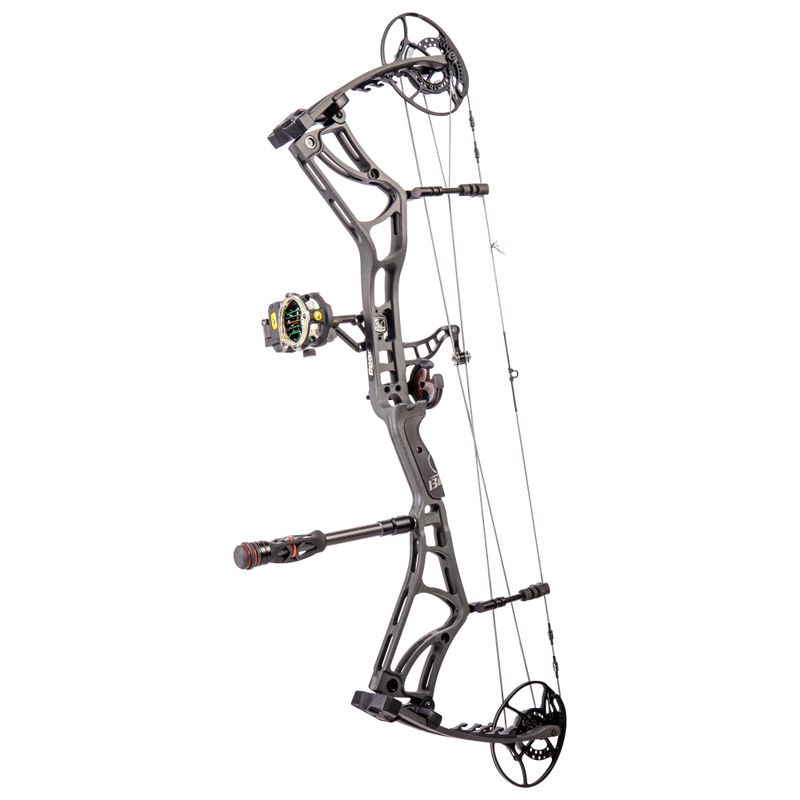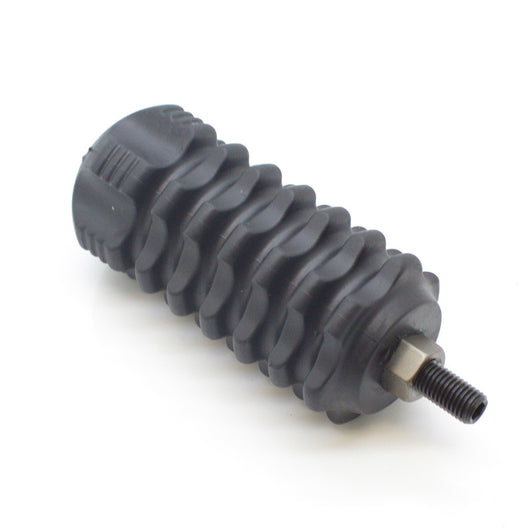Improve Your Accuracy: The Role of Archery Stabilizers
Improve Your Accuracy: The Role of Archery Stabilizers
Blog Article
The Ultimate Guide to Picking the Right Archery Stabilizer for Boosted Precision
Among the various devices available, an archery stabilizer plays a significant role in improving accuracy. In this detailed overview, we will explore the crucial aspects to think about when selecting an archery stabilizer for boosted accuracy. Whether you are a skilled archer looking to upgrade your equipment or a newbie looking for advice, join us on this trip as we decipher the secrets to selecting the ideal archery stabilizer.
Length: Locating the Ideal Stabilizer Size
Establishing the suitable stabilizer size is vital when choosing an archery stabilizer for optimum performance. The size of a stabilizer straight impacts the balance, security, and accuracy of the bow. A stabilizer that is too long can make the bow really feel top-heavy and hard to control, while a stabilizer that is too brief may not offer sufficient stability and dampening of resonances. Discovering the right size requires thinking about variables such as the archer's shooting style, bow weight, and individual preference.
A longer stabilizer, typically varying from 8 to 12 inches, can give greater stability and reduce bow torque. This is specifically beneficial for archers that fire with a high draw weight or those who have a propensity to torque the bow during the shot. The added size helps to distribute the weight evenly and counterbalance any type of torque or movement.
On the other hand, a shorter stabilizer, typically in between 4 to 7 inches, offers a lot more ability to move and quicker response. It is preferred by archers that shoot with a lower draw weight or those who need even more movement, such as seekers or 3D shooters. The shorter size enables for simpler motion via limited rooms and faster modifications.
Ultimately, the optimal stabilizer size refers individual preference and shooting style. It is recommended to try out various sizes and observe the results on security and accuracy. Consulting with skilled archers or experts can also offer important insights and referrals.
Weight: Figuring Out the Appropriate Stabilizer Weight
After considering the optimum stabilizer length, the following essential factor to take into consideration when picking an archery stabilizer is establishing the ideal stabilizer weight - archery stabilizer. The weight of the stabilizer plays a crucial role in enhancing accuracy and stability during the shot
The weight of the stabilizer influences the equilibrium and control of the bow. A heavier stabilizer can supply raised stability and control, specifically for shooters with a propensity for shaky hands or inconsistent shots. It assists to take in the vibrations and recoil generated by the bow, minimizing torque and decreasing the effect on the arrowhead's flight.
On the various other hand, a lighter stabilizer permits for a quicker and much more responsive bow. It can be advantageous for shooters that prioritize ability to move and speed over stability. Lighter stabilizers also reduce fatigue throughout long shooting sessions or competitions.
To establish the suitable stabilizer weight for your requirements, it is vital to consider your shooting design, physical strength, and bow setup. Trying out various weights and observing the influence on your capturing performance is essential to locating the excellent equilibrium.
Eventually, the ideal stabilizer weight will certainly vary for each specific archer. It is advised to start with a moderate weight and make changes based on personal preference and shooting outcomes. Keep in mind, the goal is to achieve a stable and regulated shot, while likewise keeping comfort and ease of use.
Products: Choosing the Right Materials for Toughness and Performance
When selecting an archery stabilizer, it is important to thoroughly consider the products used in its construction to ensure longevity and optimize performance. The option of materials can significantly influence the Click This Link overall quality and performance of the stabilizer.
One of the most typically used materials for stabilizers is carbon fiber. Furthermore, carbon fiber stabilizers are immune to temperature changes and are much less most likely to warp or bend over time.
An additional prominent product for stabilizers is light weight aluminum. Light weight aluminum stabilizers are recognized for their longevity and strength. They supply outstanding dampening capacities, minimizing the amount of shock and resonance moved to the shooter's hand. Aluminum stabilizers also offer a vast array of modification options, allowing archers to adjust the weight and length to match their preferences.
Some stabilizers are built using a mix of products. For instance, a stabilizer may have a carbon fiber core wrapped in a light weight aluminum covering. This hybrid layout incorporates the finest top qualities of both materials, providing optimum security, longevity, and performance.
Design: Recognizing the Different Stabilizer Layouts and Their Impacts
Thinking about the products used in archery stabilizers, it is necessary to currently explore the various styles of stabilizers and their respective impacts. The design of an archery stabilizer plays an important function in enhancing precision and decreasing vibration during the shot. There are several different designs offered out there, each with its very own unique attributes.

Another popular layout is the side bar stabilizer. This style includes attaching a brief pole to the side of the bow, alongside the primary long pole. Side bar stabilizers assist in counterbalancing the weight of accessories, such as views or quivers, and offer additional security to the bow.
Some stabilizers come with flexible weights. These stabilizers enable archers to adjust the balance and feel of their bows by adding or eliminating weights. This function is particularly valuable for archers who prefer a specific weight distribution or wish to explore different configurations.
Additionally, some stabilizers integrate moistening modern technology to lessen resonance and noise. These stabilizers frequently have integrated dampeners or utilize materials that absorb resonances, resulting in a smoother and quieter shot.

Devices: Exploring Additional Devices for Enhanced Security
To further enhance stability in archery, additional accessories can be used. These devices are made to operate in conjunction with the archery stabilizer to provide an even higher degree of security and accuracy. One such accessory is the V-bar or the side stabilizer install. This device allows for the add-on of a second stabilizer, which aids to stabilize the bow and reduce torque. By distributing the weight uniformly on both sides of the bow, the V-bar helps to lessen any type of unwanted movement during the shot.
One more device that can improve security is a bow sling. A bow sling is a band that affixes to the bow and enables the archer to maintain an unwinded hold on the bow handle without the anxiety of dropping it (archery stabilizer). This relaxed grip helps to lower muscle tension and allows for an extra see post stable and regular shot
In addition, a stabilizer weight system can be made use of to make improvements the equilibrium and security of the bow. These weight systems generally contain little weights that can be added or removed from the stabilizer to adjust the balance point of the bow. By locating the optimal balance point, archers can accomplish an extra secure and accurate shot.
Verdict
In conclusion, picking the appropriate archery stabilizer includes thinking about factors such as size, weight, materials, style, and additional accessories. The ideal stabilizer length and weight will certainly depend on specific preferences and shooting style.
Identifying the suitable stabilizer size is essential when choosing an archery stabilizer for optimum efficiency. A stabilizer that is too long can make the bow feel difficult and top-heavy to manage, while a stabilizer that is also brief might not provide sufficient stability and dampening of resonances - archery stabilizer.Taking into account the materials utilized in archery stabilizers, it is vital to now dig into the various layouts of stabilizers and their respective impacts. Side bar stabilizers assist in counteracting the weight of accessories, such as quivers or sights, and provide extra stability to the bow
These weight systems normally are composed of little weights that can be included or eliminated from the stabilizer to change the balance Website point of the bow.
Report this page